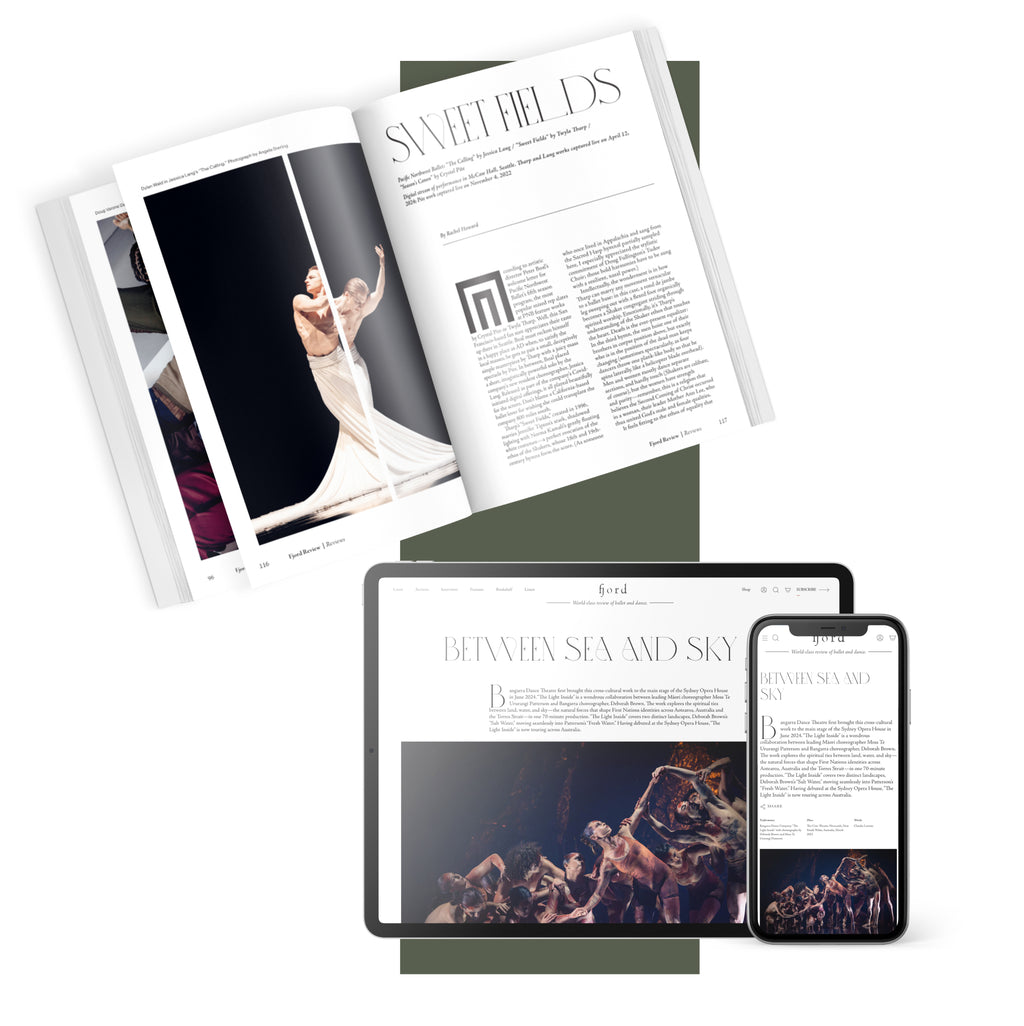The students’ port de bras was also filigreed and light throughout “Raymonda.” The ladies gracefully tilted their heads and presented their cheeks while peering under their top arms in the beginning and ending of the waltz. Simeon Neeld danced the principal male role with lovely articulate fingers—there was no flapping or stress apparent even in his heaviest jump steps (he’ll join NYCB as an apprentice this summer). And soloist Renée Augustyn pulled her wrist back prettily as she retracted her leg to passé and leaned over her knee.
This was Schorer’s third time setting “Raymonda” for Workshop, she had previously staged the ballet in 1980 and 1991. The “Raymonda” variations are technical and tricky; it is a ballet that must be reserved for very strong batches of students. Remarkably, SAB was able to mount two casts of this ballet, and the second (and younger) cast of students I saw on Saturday night were well on their way to mastery. Jaiya Chandra—a Level D student who will return to the school next year—danced the female principal role with calm radiance. She beamed as she floated down the diagonal on pointe in her first entrance. Though the central pas de deux—which is set to Glazunov’s ardent swells—is romantic, Chandra and Neeld struck a dreamily happy note instead which was perfect for their teenagerhood.
In the same vein, the soloists were youthful yet accomplished. Leah Carter displayed explosive pas de chats in the second variation, and Simone Gibson was smiley and assertive in the fourth—matching the snare drum instrumentation in the score. Yeva-Mariia Skorenka, a Ukrainian who is heading to the Oklahoma City Ballet, was polished in what is usually the second principal solo. And when I spotted Lennon Sullivan’s elegant long limbs in the group opener, I knew she would be the harp soloist (some typologies are consistant in every staging).
Renée Augustyn was a wonder in the difficult fifth variation, throwing in a bonus en dehors double pirouette from fifth position at the end of her treacherous bent-leg turn sequence before nailing the double en dedans to the knee—most impressive! I’d never seen anyone do that before, professionals included, so I reached out to Schorer. She confirmed the groundbreaking addition, responding: “I never saw Pat [Neary] or anyone else throw in a double. Renee added it a few times in rehearsal and she was on in the [performance] so she threw it in! As Mr. B would say on occasion, ‘Never been done before.’” Schorer further explained that Augustyn was able to fit it in musically because she turns equally well to the left and right, so she didn’t have to eat up counts by adding the (now standard) pass back to make the final en dedans to the right as well. She simply kept her fourth from the additional double and turned left en dedans to finish. Schorer’s excitement about her student’s prowess and the way she encourages the pushing of Balanchine technique into new territory make it easy to see why she was the faculty recipient of the Mae L. Wien Award this year, her second time winning the award.












comments